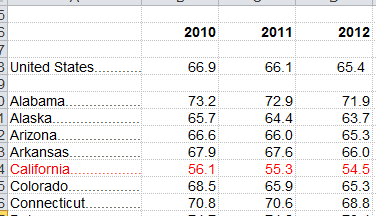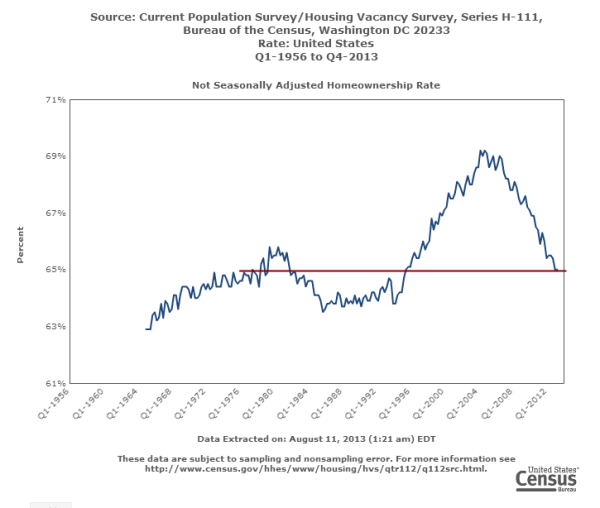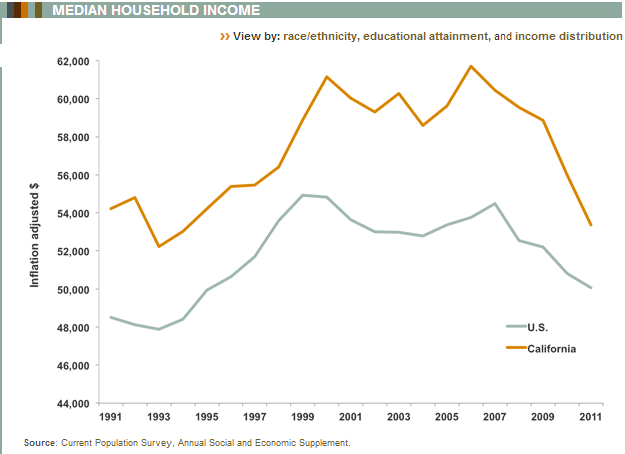By Michael Hudson
This piece first appeared at Michael Hudson’s website.
Camouflage: A cloak of artificial attractiveness or even of
invisibility. Financial debt-claims on the economy’s income and assets
camouflage themselves as wealth, although the financial tactic is to
strip it. (See Euphemism and Parasite.)
Capital: From Latin caput, “head,” as the political seat of
government, society’s guiding intelligence or brain. Economically, the
term is used ambiguously to represent two antithetical forms of capital.
Physical capital in the form of tools, machinery and buildings are
means of production evaluated by the cost of producing or acquiring
them. Finance capital represents the rentier claims on these means of
production and their revenue. Its dynamics tend ultimately to strip the
means of production via the claims of compound interest in excess of the
ability to pay out of current income and production.
Capital flight: The effect of global finance capital and local
oligarchies stripping domestic capital to move it safely offshore, to
the United States, Britain or intermediate tax havens. Russia lost an
average $25 billion annually during the 1990s as its kleptocrats moved
their money abroad, accompanied by an emigration of labor. Depopulation
typically accompanies capital flight as the economy shrinks. Argentina
is reported to have lost a million workers during the
balance-of-payments crisis of 2002-03 in which a decade of IMF planning
culminated, over and above its flight-capital losses. (See Asset
Stripping, Hyperinflation and Washington Consensus.)
Capital formation: The full term is “fixed capital formation”
or “real capital formation.” The United Kingdom’s National Accounts
define it as “investment in tangible assets. [It] consists of gross
domestic fixed capital formation and acquisition of stocks and work in
progress.” It continues “Gross domestic fixed capital formation is
defined as expenditure on fixed assets (buildings, plant and machinery
and dwellings) which either replace existing assets that are no longer
productive or increase the availability of productive assets.”??
Capital gain: The objective of investors and speculators under
a policy of asset-price inflation. Machinery and other physical capital
tends to wear out or obsolesce (see Depreciation), but prices for real
estate, monopoly privileges and other rent-yielding assets, as well as
financial securities (stocks, and bonds since 1980) tend to rise or be
inflated over time.
Although the great bulk of capital gains occur in real estate, most
popular lobbying and journalistic discussion treat capital gains as the
reward for industrial innovation and enterprise. Investors claim that
capital gains are required as an incentive to induce them to seek out
opportunities likely to rise in price, and conclude that this price
appreciation helps allocate resources to the most profitable (and
implicitly, most beneficial) sectors. This logic succeeded in getting
the U.S. tax rate on capital gains reduced to just half the normal
income-tax rate. (They originally were treated as normal income.) Many
countries fail to tax these asset-price gains at all, as if they did not
exist. But they are now the main objective of investors seeking total
returns.
Capitalism: The term popularized by Werner Sombart in Das
moderne Kapitalismus [1909] to describe the social system based on
promoting the accumulation of capital. (Marx himself did not use the
term capitalism.) Long used mainly as an economic invective, the term
only recently has become more glorified by neoliberals, referring mainly
to finance capitalism.
Capitalism, finance: See Finance Capitalism.
Capitalism, Pentagon: See Pentagon Capitalism.
Cash flow: In older usage, the sum of profits plus
depreciation. The more recent usage is ebitda, the acronym for earnings
before interest, taxes, depreciation and amortization. This flow of
income is available for new direct investment, to pay creditors or
stockholders, although under finance capitalism it is absorbed
increasingly by interest charges.
Central bank: Starting with the Bank of England, capped by the
U.S. Federal Reserve Bank, a semipublic (although initially privately
owned) institution administered by the commercial banks to provide
sufficient liquidity to “avoid financial collapse,” which may become a
euphemism for providing enough credit to keep inflating financial
bubbles at a rate that will save debtors from defaulting and hence
avoiding real-estate and stock-market loans from going bad and
threatening the solvency of commercial banks. (See Bond, Treasury.)
Chartalism: Another term for the State Theory of Money. As
Henry Liu has described it, “When the state issues fiat money under the
principle of Chartalism, the something of value behind it is the
fulfillment of tax obligations. Thus the state issues a credit
instrument, called (fiat) money, good for the cancellation of tax
liabilities. By issuing fiat money, the state is not borrowing from
anyone. It is issuing tax credit to the economy.” (“Dollar Hegemony
Against Sovereign Credit,” Asia Times, June 24, 2005.)
Chicago Boys: The University of Chicago economists brought to
Chile in 1974 by its military dictatorship to turn economic control over
to the junta’s supporters. Euphemizing their policy as introducing
“free markets,” the Chicago Boys engineered a free lunch by giving away
public enterprises. To silence criticism, they shut down every economics
department in Chile except that of the Catholic University where the
Chicago School had gained control. (See Labor Capitalism, Privatization
and Washington Consensus.)
Chicago School: Named after the University of Chicago’s
Business School where Milton Friedman and other monetarists established
an early beachhead. The essence of their ideology is that government has
no positive role, being only a deadweight burden. Starting with John D.
Rockefeller, substantial funding for these economists came from
rentiers seeking to replace the tax burden on property, monopoly power
and finance with a tax shift onto the rest of the economy and give free
reign for the FIRE sector to charge rent and interest free of
regulation. Hence the euphemism “free-market school.” (See Free Lunch
and Market Fundamentalism.)
Choice: What monopolists and other opponents of public
regulation seek to limit, because limiting choice is what makes
rent-seeking possible. The most successful monopolies sell essential
products or services, giving them an ability to administer prices (e.g.
for insurance, health care, oil and privatized monopolies). The idea
that everyone chooses their own economic fate by being left “free to
choose” is a euphemism for withdrawing public oversight of financial and
property abuses. The result on the macroeconomic level is called
“freedom of choice” only in the sense that Anatole France poked fun at
when he quipped that “The poor man has as much right to sleep under a
bridge as a rich man.”
Circular flow: The reciprocal flow of receipts and payments.
The earliest model of circular flow was by the royal surgeon and founder
of Physiocracy, Francois Quesnay, inspire by the circulation of blood
in the human body. Most economic models since J. B. Say have focused on
the reciprocal flow of income between producers and consumers, leaving
out payments for debt service and property rent. (See Say’s Law and John
Maynard Keynes.) But a rising proportion of income is diverted to pay
interest charges as the economy’s debt overhead grows over the course of
each business cycle and from one business upswing to the next. Because
most net creditors either are institutional investors or belong to the
population’s wealthiest layer, this debt service appears as “saving,”
which Keynes criticized in his General Theory for reducing the demand
for current output.
Circular flow (new model): The old circular flow: from
industrial companies to their employees, who use their wages to buy what
they produce. This is why Henry Ford famously paid his workers the
then-towering $5 a day. This was Say’s law: Income paid for production
is matched by consumption, in order for equilibrium to be maintained in a
way that enables the economy to keep on growing.
The new circular flow: from the Fed and Treasury to Wall
Street in bailouts, back to Washington in the form of campaign
contributions. The money is circulated without having to go through the
“real” economy of production and consumption at all.
Class: Classical political economy defined classes by their
relationship to the means of production – land, labor and capital.
Landlords charged rent, workers earned wages, and capitalists employed
wage-labor to produce commodities to sell at a profit. The implication
was that each form of income was a payment to a factor of production,
without paying much attention to taxes or interest payments to the
government and to creditors. All classes tend to be taxpayers and also
to be debtors and creditors simultaneously.
A class approach thus relates only to one part of the overall
economy. The American protectionist Simon Patten suggested that public
improvements (such as the Erie Canal, roads and communications) were a
fourth factor of production. Governments levy taxes to support a royal
or civil bureaucracy (see Milovan Djilas, The New Class for a study of a
Soviet-style government class), and to wage wars. Meanwhile, creditors
supply money in exchange for interest; but money is not a means of
production. One cannot really speak of a “saver” or “creditor” class as
such, because all classes are savers, and most also are debtors.
Class warfare: The 19th century’s most characteristic economic
warfare saw industrialists fight to keep profits high by minimizing
labor’s wages. Toward this end they fought not only against labor unions
and socialists but also against landlords and monopolists, so as to
obtain a competitive advantage against foreign industrial employers by
purchasing food in the cheapest markets and supply necessities at the
lowest price. Class warfare and free markets thus were intertwined in
Ricardo’s day.
Today, financial managers have taken control of industry, using its
profits to pay interest and other financial charges. Meanwhile, finance
supports real estate and monopolies as its major collateral for loans.
The upshot is that interest now is paid more out of economic rent than
profit, prompting the financial lobby to defend monopoly rights and
economic deregulation. The banking and financial sector finds its major
source of business in real estate, the economy’s largest sector
(accounting for 70 percent of bank loans), followed by mining and other
natural monopolies, including the public monopolies such as water, power
and communications that are now being privatized.
Labor has won concessions from industry, but still has not come to
terms with the role of finance in squeezing an economic surplus out of
companies that are “financialized.” Having transmuted industrial capital
into finance capital, the latter is now moving to take over governments
to promote its interests (see Moral Hazard and Washington Consensus).
In colloquial language, however, the term “class warfare” is applied
only to debtors and employees seeking to protect their position as
wealth is increasingly concentrated at the top of the economic pyramid.
(See Compound Interest.)
Classical political economy: The body of economic analysis
emerging out of 18th-century Enlightenment’s progressive moral
philosophy, extending from the Physiocrats (see Economists) and Adam
Smith through David Ricardo and John Stuart Mill, culminating in Karl
Marx. The common denominator of these writers was the labor theory of
value and the complementary theory of economic rent, developed to
isolate non-labor costs (see Free Lunch). Their critique of rentier
income was countered by a post-classical “neoclassical” school of
economists (see Marginal Utility, Neoliberalism and Road to Serfdom.)
Clean Slate: The policy of annulling debts to save the economy
and society from being torn apart financially and property being
transferred to creditors through debt foreclosure. Originally a royal
practice in Bronze Age Sumer and Babylonia, this policy became the core
of Judaic Law in the form of the Jubilee Year. In modern times a
moratorium was declared on Inter-Ally World War I debts and German
reparations in 1931, but debt cancellations now occur only through
personal or corporate bankruptcy, not on an economy-wide basis.
Client oligarchy: The ruling class of a “developing” (that is,
backward) country that has been co-opted into serving U.S. and
cosmopolitan finance capital in exchange for agreeing to IMF and World
Bank “conditionalities” and permit capital flight (“free capital
movement”) and un-taxing monopoly capital and other property, mainly for
the benefit of foreign investors, including the client oligarchy via
its own offshore financial accounts (see Offshore Banking Centers and
Democracy).
Colonialism: A policy whereby a mother country underdevelops
its periphery by imposing a double standard favoring industry, food
self-sufficiency and high technology at home, and raw-materials
production and low-wage manual labor abroad; and democracy at home, in
contrast with client oligarchies in the colonies, whose loyalty and even
identity lies mainly with the mother country and helps provide it with
inexpensive raw materials and other products which it chooses not to
produce at home. See Gains from Trade and Underdevelopment. Superceded
by Dollar Hegemony.
Commons: Publicly held land and other economic infrastructure
in the public domain, such as water, land, radio airwaves, forests and
air, and natural monopolies such as transportation, power and telephone
service, to be organized in society’s overall long-term self-interest
rather than monopolized by private-sector rentiers. The idea of an
inherent “tragedy of the commons” resulting from overuse often is cited
as the reason why this policy cannot work over time. However, that
ideological position does not reflect historical reality. The commons
traditionally have been treated with a view toward long-term
preservation of social integrity and balance.
Communism: In Marxist and Leninist terminology, the final
stage of socialism in which the state is to wither away. But the outcome
of the Soviet model turned out to be a Stalinist dictatorship by the
party bureaucracy. Anti-government ideologues claim that this is the
inherent fate of socialism, statist, or even mixed economies that wield
public regulatory power.
Company: From “companion,” literally those who break bread
together; originally a “company of men” in the form of marauding bands
seizing lands and subduing their populations. The narrowing of this term
to mercantile commerce retains the idea of a closed band, most
notoriously in the form of the limited-liability corporation (LLC). The
latter is a legal filter to protect businessmen from economic liability
for their actions. As such, a limited liability company is the
alternative to taking responsibility for the so-called “external”
environmental and social costs of doing business, shifting these onto
society at large. (See Externality.)
Compound Interest: The exponential rate at which an
interest-bearing loan or debt doubles under conditions where the
interest is added onto the loan principle, earning interest itself. (See
Doubling Time, Rule of 72 and Sinking Fund.) The basic doubling curve
is described mathematically as y=x2. The phenomenon was known already in
the Old Babylonian period c. 2000 BC by the term “interest on interest”
(mash-mash). However, loan contracts were for a specified duration, and
when they expired the creditor had to draw up a new contract to receive
further interest.
Prior to 1972 it was normal for Latin American countries simply to
borrow the interest charges due on their foreign debt each year. This
practice now (2005) characterizes over 20 percent of home mortgage
loans, in order to “free” debtors from having to pay the amortization
charges (and thereby leaving their debts to continue to multiply rather
than being paid off).
Conditionalities: The requirement by the IMF and World Bank
that indebted governments sell off their public domain and public
enterprises, and also deregulate their monopolies and markets in
exchange for creditor nations rolling over their foreign debts and
refraining from overthrowing their governments either by covert means or
by force. Conditionalities are imposed mainly on hapless third-world
debtors and the post-Soviet bloc, with the support of local client
oligarchies. (See Washington Consensus.)
Consumer: A euphemism for wage earner, viewed in terms of
spending power rather than earning power. Today, a consumer is a debtor,
as consumption standards have been maintained only by running deeper
and deeper into debt. (See equity withdrawal.)
Consumer economy: As part of the postindustrial service
economy, employees and workers are referred to as “consumers” and
proclaimed king rather than the exploited factor of production. But it
is the advertisers and mass-market producers who occupy the commanding
position in shaping consumer tastes. Television and radio as well as the
printed media have been turned into advertising vehicles and only
incidentally for the news or culture. Poll-takers have found that the
most open to being influenced are youth, up to the age of 25; after that
age, they tend to become cynical. This helps explain why adult
programming has been largely ignored by today’s media, throwing into
question the real meaning of participatory democracy.
Corruption: Progress in a direction that depletes society’s
power to live and grow, e.g. as democracy is transformed into oligarchy.
It may take the form of an originally useful idea gone bad or turned
into a zero-sum activity. See Law of Unintended Consequences.
Creative Destruction: Joseph Schumpeter famously cited
creative destruction as the motive force of entrepreneurial capitalism.
He defined it as innovations that were able to undersell and hence
replace earlier production or distribution technologies.
Socialists accused capitalism of being a system that makes money out
of, and in fact, thrives on, destruction and tragedy. Is there truth in
this?
Ancient communities sought to protect the weak and poor, especially
debtors (but not slaves captured from other communities, to be sure).
Hardship was made temporary. Individuals reduced to debt bondage
(usually as a result of natural disaster, warfare, death or infirmity)
were released after a given period. Rulers decreed Clean Slates that
annulled the backlog of debts, liberated the bond-servants and returned
the land-tenure rights to debtors who had forfeited them to creditors or
sold them under economic duress.
The reason for avoiding creative destruction was that by depriving
the citizenry of land and liberty, it destroyed the community’s ability
to field an army, as a prerequisite for citizenship was land tenure and
personal liberty. This is why even classical antiquity (Judah and Rome)
liberated debt servants and even slaves in times of military attack so
that they could fight in defense of their communities. This was in an
era where a community’s survival reflected largely the size of its free
population.
This no longer was the case as armies shifted to mercenaries rather
than depending on the draft of citizens. Today, a nation’s economic
surplus is likely to be larger with less population. Prosperity under
industrial and finance capitalism often is achieved in a manner that
breaks up families and reduces the population.
Most notoriously, neoliberal anti-labor policies have led to severe
demographic collapse in Russia and the Baltic states, and even Western
Europe is losing population. Destruction is becoming less “creative” as
this collapse is not associated with rising productivity and investment,
but merely with the destruction of government’s ability to tax and
spend.
Credit: A debt that has not been paid. As a verb, credit is
the act of establishing a debt on the part of a loan recipient or buyer.
Money is a form of credit, putting its holders in the position of a
creditor vis-à-vis the rest of society willing to accept money in
payment for their goods, property or labor.
Crusade: An attack that unifies both the attacking body and
the body being attacked, as when Christian Europe attacked the Moslem
Near East in the 12th century. However, crusades typically end up being
politically divisive and cult-like, polarizing society between crusaders
and their enemies. In this respect political and economic crusades are
like religious crusades. (See Fundamentalist, Neoconservatives,
Neoliberalism and Road to Serfdom.)
Horia Varlan (CC BY 2.0)
Republished from:
TruthDig










